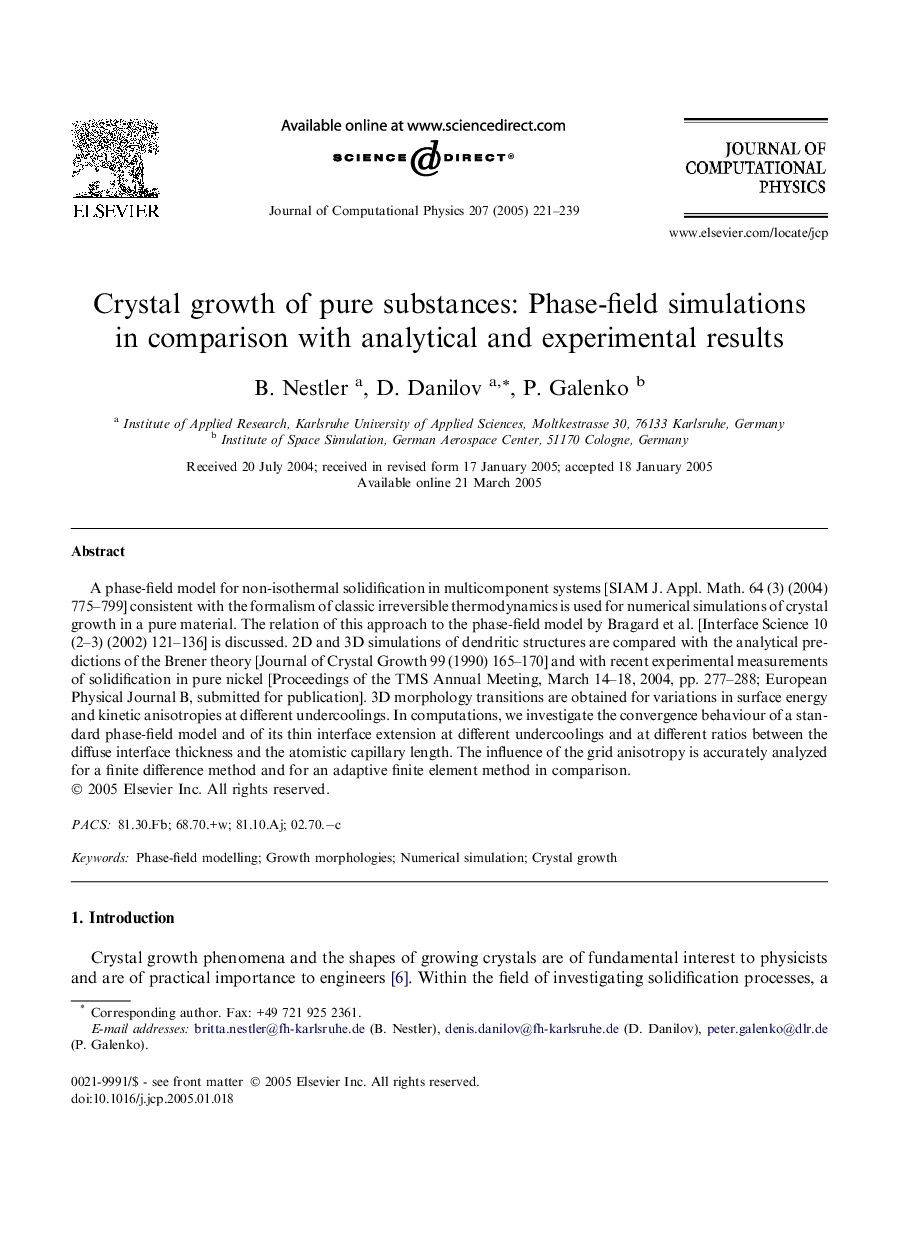| Article ID | Journal | Published Year | Pages | File Type |
|---|---|---|---|---|
| 10357069 | Journal of Computational Physics | 2005 | 19 Pages |
Abstract
A phase-field model for non-isothermal solidification in multicomponent systems [SIAM J. Appl. Math. 64 (3) (2004) 775-799] consistent with the formalism of classic irreversible thermodynamics is used for numerical simulations of crystal growth in a pure material. The relation of this approach to the phase-field model by Bragard et al. [Interface Science 10 (2-3) (2002) 121-136] is discussed. 2D and 3D simulations of dendritic structures are compared with the analytical predictions of the Brener theory [Journal of Crystal Growth 99 (1990) 165-170] and with recent experimental measurements of solidification in pure nickel [Proceedings of the TMS Annual Meeting, March 14-18, 2004, pp. 277-288; European Physical Journal B, submitted for publication]. 3D morphology transitions are obtained for variations in surface energy and kinetic anisotropies at different undercoolings. In computations, we investigate the convergence behaviour of a standard phase-field model and of its thin interface extension at different undercoolings and at different ratios between the diffuse interface thickness and the atomistic capillary length. The influence of the grid anisotropy is accurately analyzed for a finite difference method and for an adaptive finite element method in comparison.
Related Topics
Physical Sciences and Engineering
Computer Science
Computer Science Applications
Authors
B. Nestler, D. Danilov, P. Galenko,
